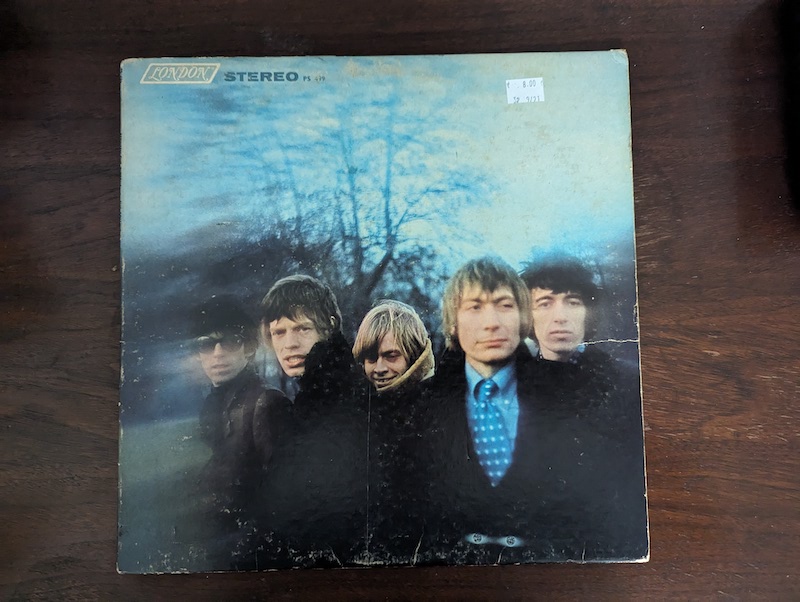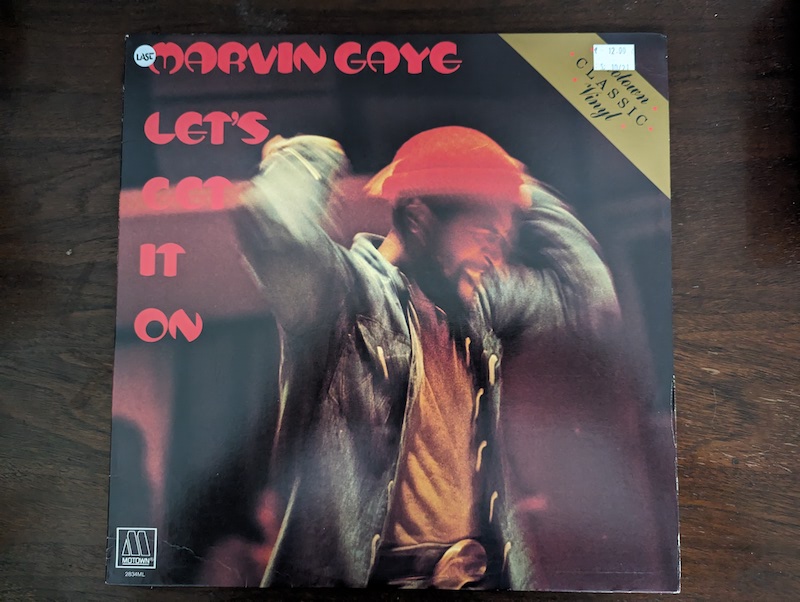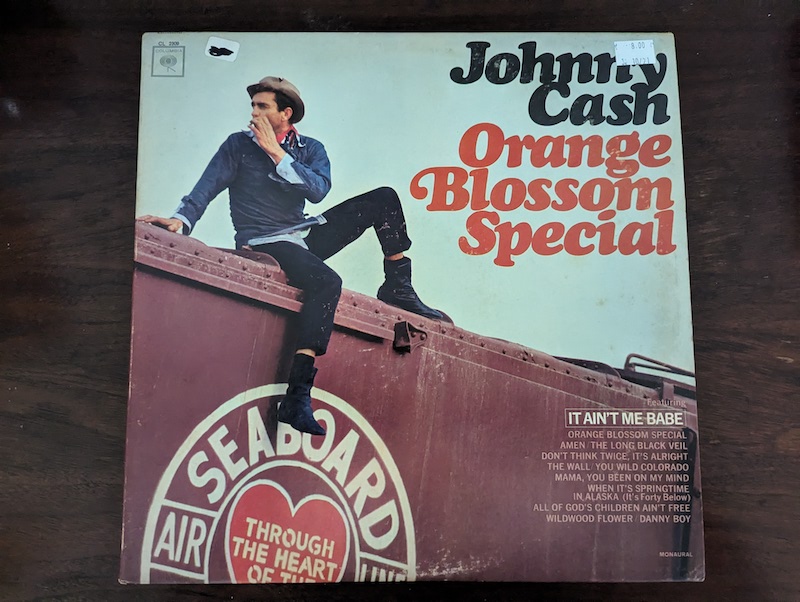Johnny Cash – Orange Blossom Special
Something about me that’s probably not surprising and also probably not great for my budget is that I can walk into a record store, at just about any time, with no shopping list (or discogs wantlist, which is always long, for what it’s worth) and still walk out with something good. Part of that is just having listened to and come in contact with so much great music over the years that it’s very rare to encounter crates with nothing to offer me. It happens, but not very often.
Shortly after we moved to Richmond, we made a point of exploring its various neighborhoods, which we’re now very familiar with (but still getting to know the state of Virginia). At the time, we were shopping for a house in Church Hill, where we now live, and there’s a very cool shop in our neighborhood called Records and Relics that sells only used records. But it’s loaded with good stuff. So on my first visit, I left with an armful of records and probably paid around $40 total? Those are some of my favorite record shopping experiences. But they were all more-or-less classic albums that I bought to fill in some of the gaps.
By this stage I only had one Johnny Cash record, which was kind of a strange early ’60s compilation of hits of sorts—hymns, historical ballads, and “Ring of Fire.” This is one of his mid-’60s studio albums, often considered one of his better front-to-back studio recordings. Notably, it features three Dylan covers: “It Ain’t Me Babe,” “Mama, You Been on My Mind,” and “Don’t Think Twice, It’s Alright,” the latter a particular song of interest because another song he recorded, “Understand Your Man,” which sounds suspiciously similar. But Dylan’s tune was based on another song, “Who’s Gonna Buy You Ribbons When I’m Gone,” so in the pantheon of folk/country music, there’s a lot of shared melody going around.
This is, indeed, a great record, and features some classic songs—some that aren’t even Dylan’s!—including Johnny Horton’s “When It’s Springtime In Alaska (It’s Forty Below)” and the great murder ballad “The Long Black Veil.” It opens with a train song (the title track) and ends with a gospel revival hymn, and truthfully covers just as much ground as any of his compilations (which by now probably outnumber his studio albums—and if you’re not aware, he recorded a LOT). Put another way, one of the best collections of Cash material is titled Love/God/Murder, and this album has all three.
Rating: 9.2
Sound Quality: Great

The Rolling Stones – Between the Buttons
Another album from that shopping trip (all three of these were picked up at Records and Relics) is this very good but not top-tier Stones album. I’ve written before about how from my thirties on, I’ve become a much bigger Rolling Stones fan than I ever expected I would. In younger days, I assumed I only really liked their British invasion, garagey stuff, and was less interested in their bluesier late ’60s and early ’70s period. Now it’s flipped.
There’s a reason that the era from Beggars Banquet to Exile on Main St. is regarded as highly as it is—those are all pretty much perfect records. But the period just before that is fascinating, because it found the group stepping out of their comfort zone. Their Satanic Majesties’ Request is not a very good album—the band isn’t great at psychedelia—but it has a handful of really great songs. And Aftermath isn’t a total commitment to psych, but it’s where they started to dabble in that arena. Between the Buttons is kind of all over the place: psych pop here, baroque pop there, some of their standard blues-rock in between. As an album it’s pretty solid, with some notable highlights (“Ruby Tuesday” on the U.S. version), some hits that not everyone loves (“Let’s Spend the Night Together,” which some people absolutely hate, I think it’s fine I guess), and a lot of deep cuts that probably didn’t survive the group’s live setlists beyond the late ’60s. It’s a good record, fun even! And far more successful than Satanic Majesties. Would I call it essential? Maybe not, but for $8, it’s hard to pass up.
Rating: 8.9
Sound Quality: Great

Marvin Gaye – Let’s Get It On
Not long after Marvin Gaye released What’s Going On, his famous protest album and state of the world—and by all rights his greatest album, a statement that’s not even halfway to controversial—he swung to the other direction and recorded an album about sex. “Let’s Get It On,” its title track, is maybe the most famous song about sex ever recorded. That’s probably also not very controversial, though it obviously has a lot of competition. What I do know is that when you hear it in Reese’s commercials, it’s probably reached a level of ubiquity that borders on immortality (maybe for better or for worse given the circumstances).
I don’t know how scandalous this was in 1973—by today’s standards it’s relatively tasteful. Obviously “let’s get it on” isn’t a particularly vulgar come-on, “You Sure Love to Ball” is maybe a bit more so, and the subtle moans of ecstasy at certain points do push it a little bit, but a decade later Prince would challenge censors everywhere with “Erotic City” (He’s actually saying “funk”—or IS HE?). That said, this is to sex what What’s Going On is to social consciousness. They’re composed somewhat similarly, beginning with the title track and employing recurring motifs, tracks that bleed into one another and so on. It’s a full-blown song cycle about doin’ it. I don’t know if Marvin Gaye was the first to do that, but obviously his has stood the test of time.
This, obviously, was also part of the same used-record buying binge, all of them for pretty cheap. Obviously if you can get Cash, The Stones and Marvin together for under $30, you’re doing alright. I’ll also have another one from this batch in the next post.
Rating: 9.4
Sound Quality: Great

Leave a comment